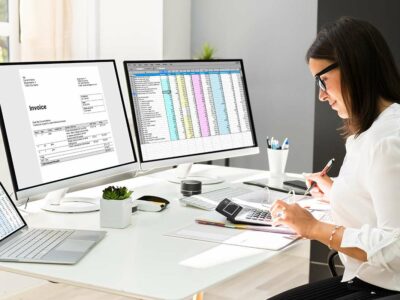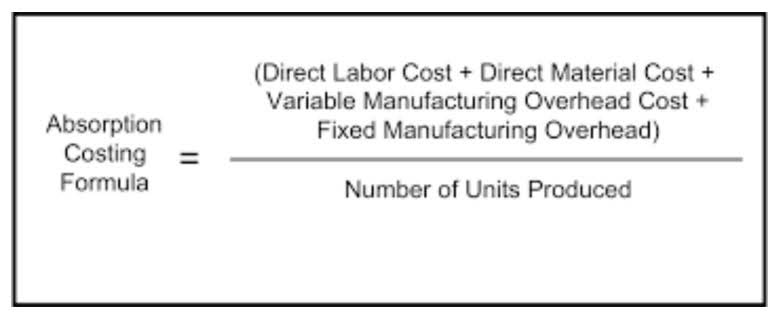
It’s extremely important for businesses in that it provides the basis for calculating various financial ratios, as well as for creating financial statements. Taking time to learn the accounting equation and to recognise the dual aspect of every transaction will help you to understand the fundamentals of accounting. Whatever happens, the transaction will always result in the accounting equation balancing. Anushka will record revenue (income) of $400 for the sale made. A trade receivable (asset) will be recorded to represent Anushka’s right to receive $400 of cash from the customer in the future. As inventory (asset) has now been sold, it must be removed from the accounting records and a cost of sales (expense) figure recorded.
Components Affecting Capital

Speakers, Inc. purchases a $500,000 building by paying $100,000 in cash and taking out a $400,000 mortgage. This business transaction decreases assets by the $100,000 of cash disbursed, increases assets by the new $500,000 building, and increases liabilities by the new $400,000 mortgage. To prepare the balance sheet and other financial statements, you have to first choose an accounting system. The three main systems used in business are manual, cloud-based accounting software, and ERP software. Now, these changes in the accounting equation get recorded https://www.bookstime.com/ into the business’ financial books through double-entry bookkeeping. As we previously mentioned, the accounting equation is the same for all businesses.

Create a Free Account and Ask Any Financial Question
The effect of recording in debit or credit depends upon the normal balance of the account debited or credited. The accounting equation is the foundation of double-entry bookkeeping which is the bookkeeping method used by most businesses, regardless of their size, nature, or structure. This bookkeeping method assures that the balance sheet statement always equals in the end. An error in transaction analysis could result in incorrect financial statements.
- An accounting transaction is a business activity or event that causes a measurable change in the accounting equation.
- The elements of accounting pertain to assets, liabilities, and capital.
- The assets of the business will increase by $12,000 as a result of acquiring the van (asset) but will also decrease by an equal amount due to the payment of cash (asset).
- In accounting, the claims of creditors are referred to as liabilities and the claims of owner are referred to as owner’s equity.
- Take this quick test on accounting equations to help you prepare for your exams, interviews, or different tests.
Ask Any Financial Question

The remainder is the shareholders’ equity, which would be returned to them. In other words, the total amount of all assets will always equal the sum of liabilities and shareholders’ equity. In accounting, decision-making is the process of choosing between two or more unearned revenue courses of action to achieve the desired outcome.
Because of the two-fold effect of business transactions, the equation always stays in balance. The 500 year-old accounting system where every transaction is recorded into at least two accounts. Parts 2 – 6 illustrate transactions involving a sole proprietorship.Parts 7 – 10 illustrate almost identical transactions as they would take place in a corporation.Click here to skip to Part 7.
Effects of Transactions on Accounting Equation
Equity represents the portion of company assets that shareholders or partners own. In other words, the shareholders or partners own the remainder of assets once all of the liabilities are paid off. Receivables arise when a company provides a service or sells a product to someone on credit. Want to learn more about recording transactions and doing accounting for your small business?
- The owner’s equity is the value of assets that belong to the owner(s).
- As business transactions take place, the values of the elements in the accounting equation change.
- Metro issued a check to Office Lux for $300 previously purchased supplies on account.
- Implicit to the notion of a liability is the idea of an “existing” obligation to pay or perform some duty.
- The accounting equation is a concise expression of the complex, expanded, and multi-item display of a balance sheet.
Balance Sheet and Income Statement
An accounting transaction is a business activity or event that causes a measurable change in the accounting equation. Merely placing an order for goods is not a recordable transaction because no exchange has taken place. In the coming sections, you will learn more about the different kinds of financial statements accountants generate fundamental accounting equation for businesses. For a company keeping accurate accounts, every business transaction will be represented in at least two of its accounts.
- Parts 2 – 6 illustrate transactions involving a sole proprietorship.Parts 7 – 10 illustrate almost identical transactions as they would take place in a corporation.Click here to skip to Part 7.
- (Note that, as above, the adjustment to the inventory and cost of sales figures may be made at the year-end through an adjustment to the closing stock but has been illustrated below for completeness).
- For each of the following transactions, show the effect (as pluses and minuses) on assets, liabilities, and equity.
- In the case of a limited liability company, capital would be referred to as ‘Equity’.
- Although Coca-Cola and your local fitness center may be as different as chalk and cheese, they do have one thing in common – and that’s their accounting equation.
- In other words, the total amount of all assets will always equal the sum of liabilities and shareholders’ equity.

Upgrading to a paid membership gives you access to our extensive collection of plug-and-play Templates designed to power your performance—as well as CFI’s full course catalog and accredited Certification Programs. CFI is the global institution behind the financial modeling and valuation analyst FMVA® Designation. CFI is on a mission to enable anyone to be a great financial analyst and have a great career path. In order to help you advance your career, CFI has compiled many resources to assist you along the path.
An asset is considered current if it is for sale, if it can be realized within 12 month from the end of the accounting period or within the company’s normal operating cycle if it exceeds 12 months. To make the Accounting Equation topic even easier to understand, we created a collection of premium materials called AccountingCoach PRO. Our PRO users get lifetime access to our accounting equation visual tutorial, cheat sheet, flashcards, quick test, and more. Creditors include people or entities the business owes money to, such as employees, government agencies, banks, and more.